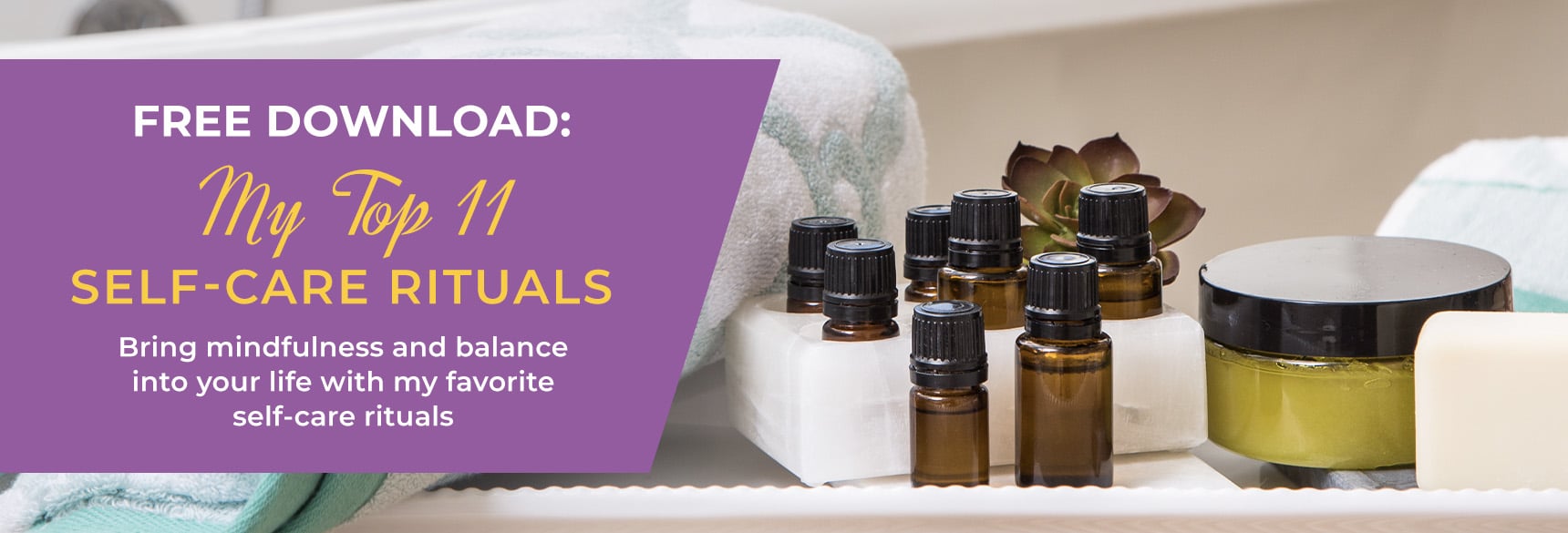There is a reason stress is called a “silent killer,” and the reason is that most of us aren’t aware that we’re experiencing it.
It has become ingrained in our culture to glorify living in survival mode and make light of past trauma. But the truth is, it’s not cute or fun to run solely on stress hormones. Our bodies were not designed to live this way, and a chronically-active stress response system may be a contributing factor to some of your most cumbersome health issues.
Today I want to talk about the importance of being conscious of and managing your stress to avoid serious health pitfalls such as insulin resistance, diabetes, stubborn weight gain, and more.
If, like I was, you’re tired of the stress and unhealed trauma getting the best of you and you’re ready to truly make a positive change that impacts your mind and body on a cellular level, here’s what you need to know…
Trauma and Your Health Are Closely Intertwined
Trauma and stress go hand in hand, and as someone who has experienced trauma as a child, I know firsthand the damage it can do to the body. I believe this is in large part why I have been a stress-o-holic most of my life.
I know I’m not alone. Can you relate?
Recently, I listened to a book by Dr. Bruce Perry and Oprah called, “What Happened to You?” about the devastating impact that trauma has on our minds and bodies. Filled with mounds of research and transformative personal stories, I was deeply moved by one in particular:
A Type-1 diabetic teenage girl was admitted to the hospital due to spiked insulin levels that became life-threatening. Initially, the doctors stabilize her but then her levels start fluctuating so sharply, to the point the doctors couldn’t dial in on the right insulin dosage for her. After a few days of this whirlwind, they begin to suspect she may be sneaking food and thus causing the blood sugar spikes and throwing off her medication.
Dr. Bruce Perry – one of the doctors treating her – begins to talk more in-depth with her in hopes of filling in the missing pieces about her puzzling current state. He learns that a couple of weeks leading up to the hospital stay, she and some friends were hanging out at a skatepark having a great time when all of a sudden gunfire erupted close by. It took mere seconds before she realized that her best friend sitting next to her had been shot. Imagine having a ball with your friends in one second, and the next, your best friend is being rushed to the hospital with a serious gunshot wound, fighting for her life.
What’s worse is the hospital in which this teen girl was staying in the same hospital her best friend was rushed to for emergency care. She is close enough to the emergency room where her friend was treated that she hears the piercing sounds of continual sirens blaring during her stay.
As Dr. Perry continues interviewing her, another ambulance approaches, siren blaring, and the girl freezes. Her resting pulse rate spikes abnormally and he quickly realizes that every time she hears the sirens, which is multiple times a day, her body’s stress response system activates, shooting cortisol, adrenaline, and insulin throughout her body. Here body is doing this in case she might need the extra energy to survive, that is: run or fight.
The doctor found that her insulin levels were unstable because the sirens activated her sympathetic nervous system (SNS) due to the trauma she recently experienced.
Our stories are important. Her story in particular is important because blood sugar levels, insulin, weight gain, and metabolic function do NOT only hinge on what and when you eat (although this is important). A sedentary lifestyle (think 8+ hours a day at an office desk), sleep deprivation, and chronic stress and trauma are all important risk factors to consider — in addition to the diet — when trying to identify the root cause of your symptoms.
How Your Body Handles an Activated Stress Response System
Whether you’re running late to a meeting, getting an emergency text from a family member, or you’re feeling triggered by the snide remark your partner made earlier, it’s important to understand what happens in your body — and how it can affect overall health — when your stress response system stays in an activated state.
Your brain’s number one job is to protect you from danger. When your brain perceives a threat, a structure called the amygdala in the limbic brain hijacks the brain into emergency mode. I call this the Stranger Danger part of our brain. Think of it like a driver’s ed teacher reaching over and grabbing the steering wheel to prevent an accident. This activates the sympathetic nervous system known as “Fight or Flight” mode. Because you need emergent energy to either fight or flee, adrenaline and cortisol flood the nervous system, causing blood pressure and blood sugar spikes, shallower breathing, and a faster heart rate.
This stress response is an amazing primitive system designed to ensure our survival but was never meant to be activated constantly. In addition to a profound impact on your metabolism, staying in a chronic survival mode state is exhausting to the body and depletes key nutrients.
Unfortunately, modern living sets the stage for more frequent episodes of stress, such as social media, endless doomsday news, an ever-growing to-do list, social isolation, division among friends and family about COVID and politics, environmental pollutants, trying to balance the new normal around safe travel and school, taking care of family or loved ones, just to name a few.
It’s likely that at some point today you have felt a bit rushed, triggered, or stressed — maybe even all three.
Health Effects of Living in Survival Mode
What happens as a result of the over-activation of your stress response system? See if any of these sound familiar:
- Fatigue
- Chronic illness and co-infections
- Sleep problems
- Irritability, anxiety, sadness
- Insulin resistance
- Sugar/carbs, fat, caffeine, or salt cravings
- Afternoon slump
- Weight gain (especially stubborn belly fat)
- Getting sick more often
- Hormone imbalances
- Hair loss
- Brain fog and forgetfulness
- Digestive problems
- Hashimoto’s symptoms or another autoimmune conditions
Over time, this can you put you at risk for:
- Heart disease
- High blood pressure
- Type 2 diabetes
- Headaches
- Sleep problems
- Chronic anxiety
- Depression
Being a mother alone is grounds for hyper-stressful days! As I spend my days caring for Kingston, I find myself having an activated stress response system more often than I have in the past five years.
I am no stranger to an over-activated stress response system. As a recovering stress-o-holic, I am still in the business of breaking longstanding patterns and continually in the conscious practice of reducing the effects of stress on my body. I’ve noticed incredible improvements, which is why I’m so passionate about helping women just like you find freedom from cyclical survival-mode living!
Best Practices for Managing Stress in a Healthy Way in the Moment
So now that you understand how high the stakes are, what can you do about it? Stress may not be going anywhere in your life, but the way you handle it can absolutely change, starting today. Here’s what I recommend:
#1 – Identify your triggers.
As they say, triggers are our teachers. Train yourself to look for signs that your brain perceives danger and is activating your sympathetic nervous system. Some of these signs include feeling hot, sweaty, clammy, flushed face, shallower breathing, or a rapid heart rate. You may also feel a rush of anxiety, racing thoughts, or even impulsivity. Take note of these signs your body is giving you. It may take some practice, but the more you do it, the easier it will be for your brain to forge new, healthier pathways for managing stressful situations.
#2 – Focus on your senses and your breathing.
Once you have identified your triggers and recognize that they are occurring in real-time, the next thing to do is take a break and focus on taking control of your physiology. Dial-in on your senses in real-time. Get up and move around: this is particularly helpful with a “freeze” response. Take deep breaths into your belly. This activates your parasympathetic nervous system (PNS), or our desired, regulated state of peace and calm. Another thing you can do is send safety signals to your brain. Safety signals come in the form of self-care, mediation, going for a walk, or breathing in essential oil.
#3 – Reach out to a trusted friend or family member.
Technology has afforded us the luxury of being able to talk to friends and family — even see their faces in real-time — in distant locations. This means that even the elderly and high-risk individuals don’t have to suffer from social isolation. Connecting with a person you care about, who you know cares about you, can calm your “fight or flight” and send safety signals to the brain that allow you to resort back to your PNS.
#4 – Implement morning and evening rituals that set you up for success.
Self-care is critical in reducing stress levels, so why not add 1-2 things you can do for yourself in the morning and before going to bed to promote a stress-free, productive day, and deep, restful sleep?
3 Easy Strategies to Promote a Healthy Stress Response
The goal is to retrain your body to not get so flustered and overwhelmed by the stressors that you encounter on a day-to-day basis. The things you can’t escape — like your phone pinging, the baby crying, tight deadlines at work — are going to keep happening, so how can you prime your body to be ready to face them? Here are some easy ways:
#1 – Practice and Prioritize Self-Care
In addition to morning and evening rituals, there are many ways to prioritize caring for your mind and body in ways that promote healing and a healthy stress response: breathing deeply, a positive mindset, nourishing yourself with proper nutrition, movement, and hydration, practicing gratitude, meditation, aromatherapy, journaling, and so much more! My Daily Self-Care Journal is a great place to start if self-care is new to you.
#2 – Use Essential Oils
These little bottles of plant-powered panacea pack a much bigger punch than the little bottles they come in and are scientifically proven to stimulate areas of your limbic system that are responsible for regulating emotions, behaviors, and more. My book, The Smart Mom’s Guide to Essential Oils, has everything you need to get started on your own journey with EOs and is jam-packed with cheat sheets, recipes, and interviews with essential oil experts! A couple of other ways to enjoy the benefits of EOs are:
Pairing essential oils with the Power of the Pause: a breathing ritual designed to promote relaxation and a re-energized state – can instantly take you from panicked to peaceful.
Create a couple of essential oil rollers. Conveniently carry them with you everywhere so you have what you need when you need it. One of my favorites is:
Stress Relief Roller Blend
Ingredients:
7 drops Frankincense essential oil
7 drops Lavender essential oil
5 drops Bergamot essential oil
Directions:
Add essential oils to a 10ml rollerball bottle and top off with a carrier oil of your choice. Apply to the back of neck, temples, wrists and mastoids, behind the ears. A powerful mood reset blend, it is effective at relieving stress, balancing mood, and releasing tense emotions. This blend can also reduce feelings of irritability throughout the day.
#3 – Adaptogenic Herbs
Herbs like Rhodiola and Ashwagandha work by regulating the hypothalamic-pituitary-adrenal (HPA) axis, or the stress response system. Ashwagandha combats chronic stress levels while restoring proper reproductive function. Other benefits include supporting memory and cognition as well as alleviating symptoms associated with depression and anxiety. Rhodiola also helps to fight those stressors that plague the body to revitalize overall wellness. Drinking Chamomile or Holy Basil (also known as Tulsi tea) can provide the same benefits.
Adrenal Love, my stellar combination of some of these adaptogenic herbs and other key nutrients, supports your body’s stress response, helps balance your moods, sustains energy levels, fights symptoms of fatigue and stress, and ultimately helps you regain control of your mind and body health.
The Bottom Line
Here’s the deal: Chronic stress is not doing us any favors, especially metabolically. It’s a major player in driving women further into insulin resistance and causing them to become pre-diabetic. Consistency in implementing the above best practices — even if only one or two of them — is key to achieving and maintaining a healthy, calm nervous system.
Imagine having the confidence and being equipped to handle whatever life throws at you. You can get there, just like I have. But it involves some awareness and practice!
My self-care is non-negotiable, and yours should be too. I have seen firsthand what happens when I don’t prioritize the things that help me feel my best. We are helpful to no one — most of all ourselves! — if we don’t have the awareness and tools needed to be productive, effective, but most of all HEALTHY, in our day-to-day lives. We owe it to our families to show up every morning as our best selves, but we owe it to ourselves just as much.
Want to learn more about how our trauma makes us sick? Listen to this podcast where we go over identifying and understanding your triggers are, working on your mental health and navigating your emotions, and creating your own reality through emotional intelligence.
[Listen to What is Trauma and How Does it Make Us Sick]




No comments yet.